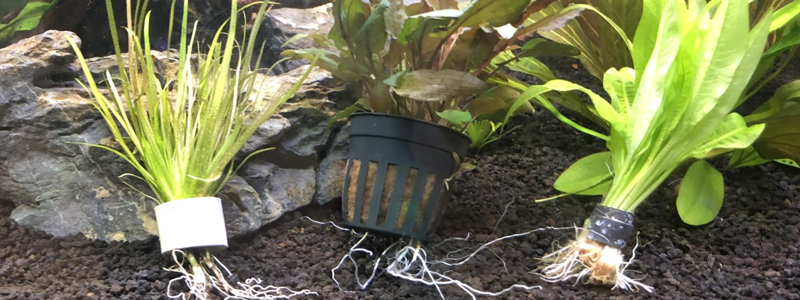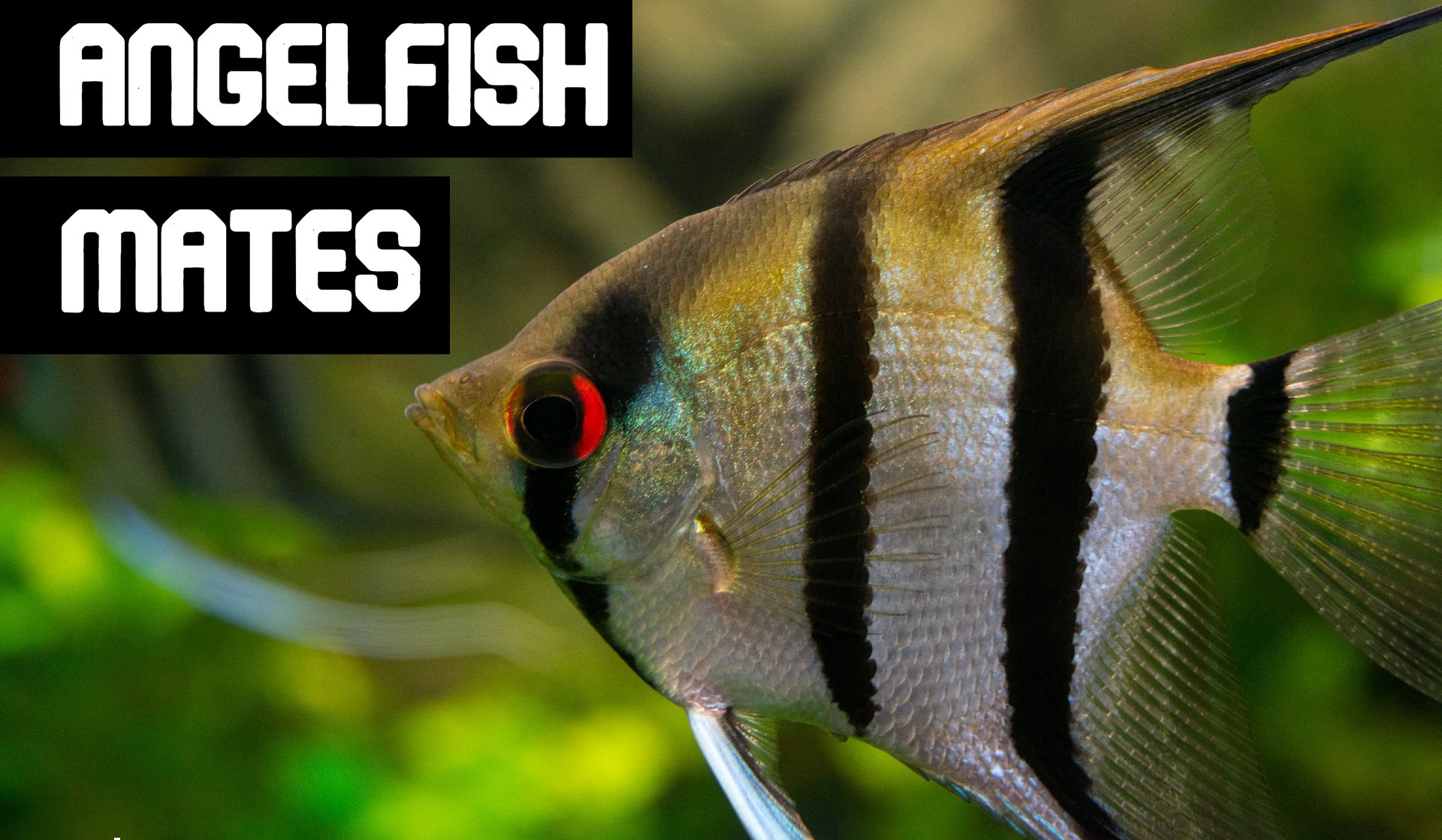You find a plant at your local fish store that would look amazing in your aquarium. You take your new plant home and you notice that there’s a piece of metal attached to the plant. Is that aquarium plant weight safe in your aquarium?
Most aquarium plant weights are safe. As long as they’re not made of lead, the aquarium weights that aquarium stores provide are safe.
Uses of an Aquarium Weight
Aquarium plant weights are something you can tie or place around an aquarium plant to keep it from floating around your tank.
Some aquarium plants would rather float freely in your tank, like java moss, while others prefer to be planted in the substrate or anchored to something stable.
It also comes down to preference—you may not mind floating plants and see no need for an anchor, while another fishkeeper wants every plant firmly anchored to the substrate and nothing floating anywhere.
Many fish stores sell aquarium plant weights, and they’re also available online.
I take a look at the different types of aquarium plant weights and which are the safest options for aquariums.
Types of Aquarium Plant Weights
There are many types of aquarium plant weights, and some of us rarely even think about them because of the way our local fish stores sell aquarium plants.
A few of the different available aquarium plants weights are:
- Potted
- Lead/Metal plant
- Plastic
- Ceramic
- Stone
- DIY
I take a closer look at each one below, along with how safe each aquarium plant weight is for your fish and other aquarium inhabitants.
Potted Aquarium Weights
Some fish stores sell pre-potted aquarium plants in plastic pots.
Often, these pots also contain some type of absorbent material, like rock wool, stuffed inside to keep the plant in place, and usually include a small rock to add weight to the plant and keep it from floating.
If you buy a “potted” plant from your local fish store, you could just leave the plant in the pot on top of your substrate, though you will want to remove the absorbent material. If you choose this option, you’re good to go, and nothing else needs to be done since the plant is already weighted down.
If you love the plant but not the pot, then it’s easy to remove the plant from its pot and bury it in the substrate. In this case, you’ll definitely need to add weight to your plant to make sure curious fish, shrimp, or invertebrates don’t accidentally free the plant enough for it to start floating or getting moved around by the current in your tank.
None of the materials in the “pot”—clay, the absorbent material, rock—would be harmful to fish if kept in the tank long-term, and this is a perfectly safe aquarium plant weight. You could even keep the wool in the pot if you want to limit the plant’s growth.
Metal Weights Aquarium Weights
Metal weights are typically metal strips that you can bend around the plant’s roots or stems which will weigh the plant down and keep it from floating.
Your plants can then be buried beneath the substrate, or allowed to sit on top, since the metal will keep them from going anywhere.
Although many aquarium plant weights are sold as “lead” weights, most are actually made from other metals, like magnesium and zinc.
However, some aquarium plant weights labeled as “lead” weights do contain lead, and should probably be avoided.
While many fishkeepers have reported that their fish seem to be fine with lead weights, and haven’t noticed any problems for their fish, lead water pipes have been banned in the United States since 1986 because lead leaches into the water, causing many harmful side effects, such as anemia and hearing problems, among many others.
It’s not clear if de-chlorinated aquarium water interacts with lead the same way untreated tap water does, but it may be best to avoid using weights that truly contain lead in your fish tank, just to be on the safe side.
Lead is also harmful if consumed, which has caused lead-based paint to be banned in the United States since 1978.
If you’re unsure whether the metal aquarium plant weights you’re considering actually contain lead or not, it’s probably best to avoid them altogether.
Suction Cups “Aquarium Plant Weight”
While not technically an aquarium plant weight, these will keep plants in place in your tank. You can easily tie plants to suction cups using a fishing line or hot glue them to the suction cup, and suction them to the sides of your tank. You can also use mini-zip ties to attach the plants to the suction cup.
This is great for plants that don’t like their roots to be buried (anubias, java fern, buce). By suction cupping them, it keeps them from clogging up the filter like they could if they were free-floating in the tank. Suction cups are also safe for the fish in your tank!
This is a fairly secure way to keep your plants in place unless you have active algae eaters who like to hang out on the suction cups and loosen them from the tank’s walls like I do!
Ceramic Weights
Ceramic weights are often made from the same materials that aquarium decorations are made from, and pose no harm to your fish.
They are typically cylinders that you place a plant into and then you can bury the plant and weight below your aquarium sand, rock, or gravel. If you’re concerned about the weight and plant getting separated, you can always tie the weight to the plant using plastic twine or fishing line.
Stone Weights
These weights may be too good-looking to bury beneath your substrate, and you may just want to use them to anchor your plants on top of the substrate instead.
Stone weights are typically cylinders that you place a plant through, and then bury or partially bury in your substrate, but you could also use a fishing line or plastic twine to tie them to the plant instead of burying both under the substrate.
These weights are great if you want a more natural look in your aquarium.
The only thing to keep in mind when using stone weights is the potential for calcium to leach into the water. This could impact your pH or water hardness, but you can always do a water test to check your levels and adjust as necessary.
DIY Weights
Of course, you can always make your own plant weights using cotton thread, fishing line, or zip ties and rocks.
To do this, you would simply tie the line around the rock and then tie the rock to the aquarium plant.
The only thing to be concerned with here would be whether the rock(s) you add contain nutrients that could leach into your water.
As noted above, using rocks could affect your pH levels or water hardness—but, again, you can always do a water test to check your levels and adjust as necessary.
If you choose other DIY materials, such as plastics or metal, be sure to rinse everything thoroughly with water first, and check what the metal you’re placing in the tank is made of to be sure you’re not adding lead.
| Aquarium Plant Weight | Materials | Safe for Aquariums? |
| “Potted” plant | Plastic or clay pot, absorbent material, rock | Yes |
| Metal weights | Magnesium, zinc, or lead | Lead: No Magnesium or Zinc: Yes |
| Suction cups | Rubber/plastic | Yes |
| Ceramic weight | Ceramic | Yes |
| Stone weight | Quartz, shale, slate, Seiryu, Ohko | Yes |
| DIY weight | Cotton thread/fishing line/zip ties and rock | Yes |
In Summary
Live plants add a lot to an aquarium, and most of the time they’re going to need some kind of weight to keep them on the bottom of your tank instead of floating around and getting stuck in your filter.
Most aquarium plant weights are safe for fish, but I’d recommend staying away from lead aquarium plant weights since there just isn’t enough information about how lead affects fish, and there is plenty of information that shows lead is harmful to humans.
You have a lot of other perfectly safe options, though, like potted plants, stone weights, suction cups, and ceramic weights to keep your aquarium plants firmly in place.




